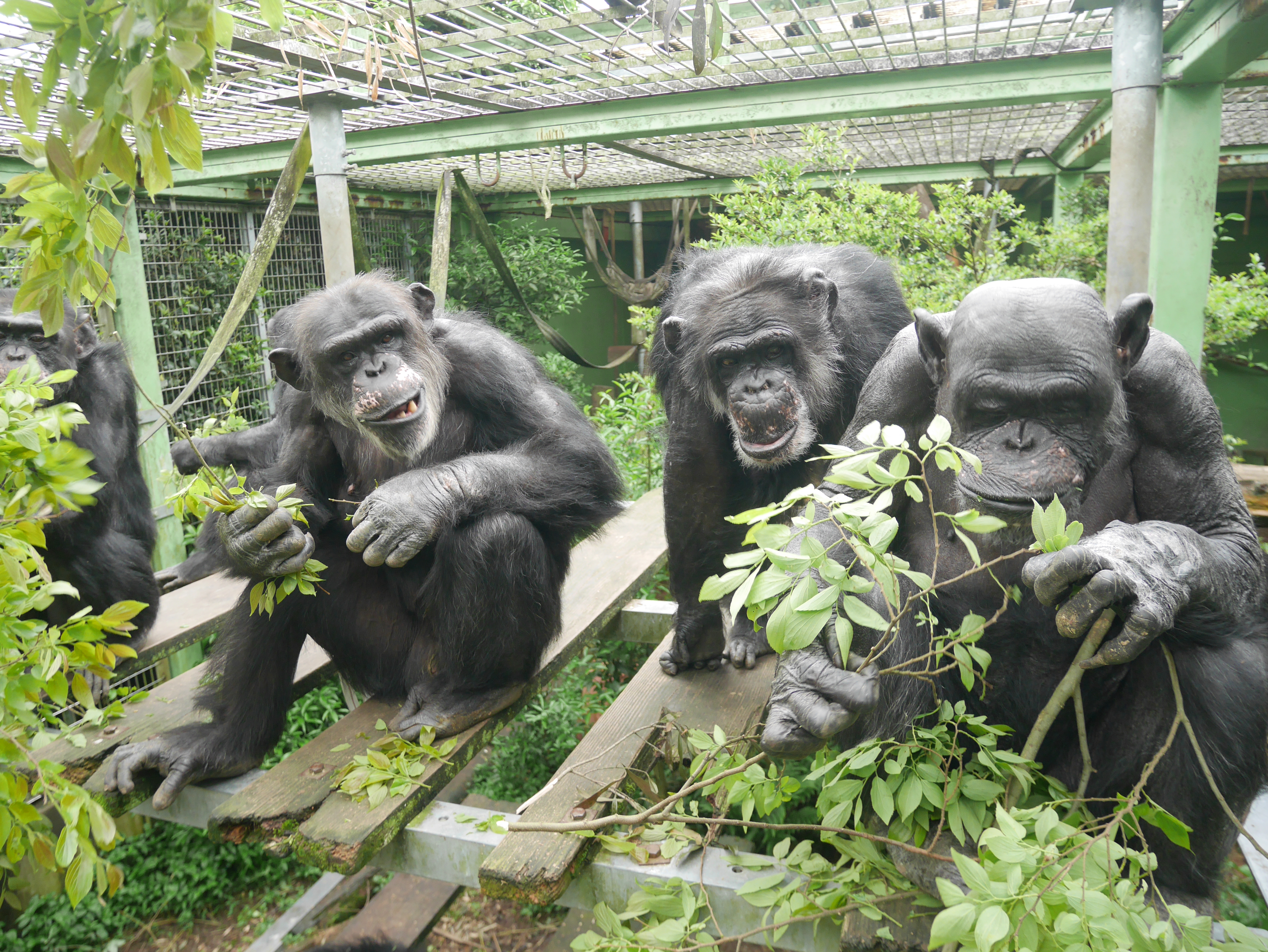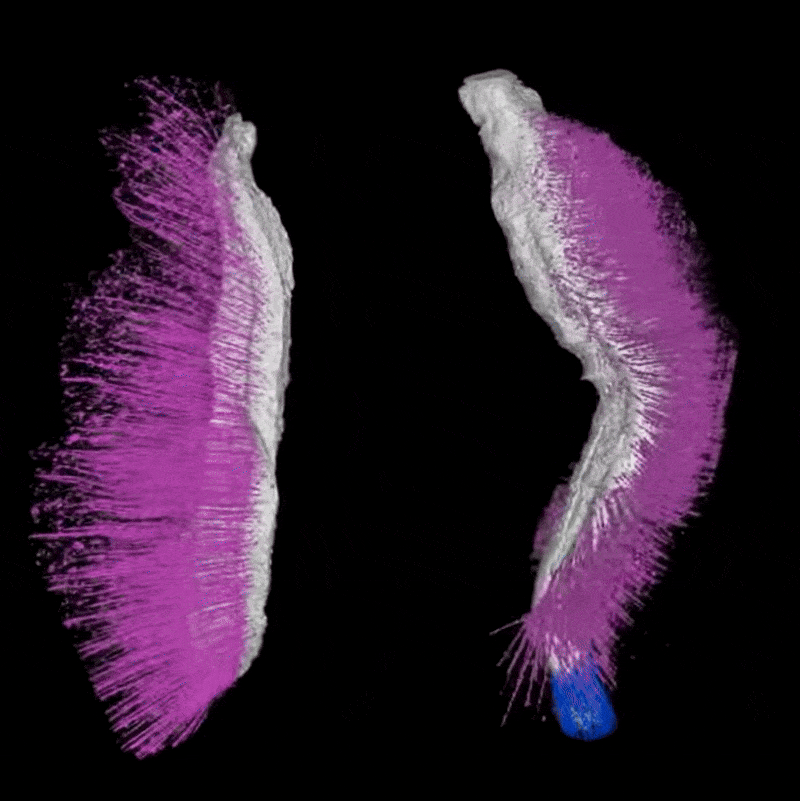Evolution
Scientists Who Found Mysterious 'Dark Oxygen' on the Ocean Floor Plan a New Expedition, Hoping to Settle Disputes
Last year, the team made headlines when it published a paper describing how metal lumps at the bottom of the Pacific Ocean seemed to produce oxygen without sunlight
Why Do Mammals Have Outer Ears? Scientists Are Getting Closer to Solving the Mystery
Two new studies offer insights into the evolution and development of external ears, which appear in humans and other mammals but aren't found in reptiles, birds or amphibians
Ape-Like Human Ancestors Were Largely Vegetarian 3.3 Million Years Ago in South Africa, Fossil Teeth Reveal
Scientists suggest meat consumption was pivotal to humans' development of larger brains, but the transition probably didn't start with Australopithecus, according to a new study
For Chimpanzees, Peeing May Be Contagious—Just Like Yawning Is for Humans, Study Finds
Scientists suggest captive chimpanzees engage in 'socially contagious urination'—that is, when one primate starts peeing, others quickly follow suit
Homo Erectus Thrived in a Desert, Study Finds, Suggesting the Early Humans Could Adapt to Extreme Environments
New research suggests modern humans aren't the only hominin species capable of "ecological flexibility"
Meet Punk and Emo, Two Angsty-Looking Fossils From 430 Million Years Ago That Shed Light on Early Mollusk Evolution
The prehistoric creatures look to be sporting a punk hairstyle and emo bangs, and one of them seemingly moved like an inchworm
From Chimps Eating Medicinal Plants to Footprints Tracking Our Early Relatives, Here Are the Most Significant Human Evolution Discoveries of 2024
Smithsonian paleoanthropologists explore how the year brought us closer to understanding ancient human relatives and origins
Seven Scientific Discoveries From 2024 That Could Lead to New Inventions
From indestructible tardigrades to body-merging comb jellies, animals can teach humans so much about medicine, robotics, aging and survival
On This Day in 1831, Charles Darwin Embarked on a Journey That Led to His Groundbreaking Theory of Evolution by Natural Selection
Darwin was just 22 when he set out on a voyage that would change the way humanity understands itself and the natural world
Scientists Unlock the Secrets of Crocodile Skin and Its Irregular, Mystifying Patterns
The scales on crocodiles’ heads are very different from the skin appendages of other animals and even distinct from the scales on the rest of their bodies
A Paleontologist Cracked Open a Rock and Discovered a Prehistoric Amphibian With a Clever Survival Strategy
Named "Ninumbeehan dookoodukah" by Eastern Shoshone students and elders, the creature burrowed in riverbeds to stay moist during extreme droughts
Paleontologists Discover a New Pterosaur, Filling a Key Gap on the Evolutionary Timeline for These Flying Reptiles
Revealed by a German fossil, the newly described species sheds light on questions that scientists have been puzzling over for nearly two centuries
How to Make a Mammal in Nine Evolutionary Steps
From the formation of inner ear bones to the rise of hair to cover our bodies, these developments made us distinct from other animals
A Rare Triassic Fossil Found in Brazil Could Shed Light on the Origin of Dinosaurs
The 237-million-year-old remains are among the oldest silesaurid fossils ever found, adding to paleontologists' understanding of this still-mysterious group of prehistoric reptiles
A Simple Chemical Shift Explains Why Parrots Are So Colorful, Study Suggests
Unlike other birds, which get pigments from their diets, parrots produce their own—but scientists never fully understood the underlying mechanisms, until now
Scientists Reveal Rare 450-Million-Year-Old Arthropod Fossil Preserved in Glittering Fool’s Gold
The critter found in New York represents a new, extinct species of arthropod that could shed light on the evolution of today's insects, crustaceans and spiders
New 'Paleo-Robots' Could Shed Light on Animal Evolution, Revealing How Some Fish Evolved to 'Walk' on Land
A team of roboticists, paleontologists and biologists are building robots to simulate crucial evolutionary developments that can’t be tested with static fossils
Fossils Reveal the Face of an Extinct Nine-Foot-Long 'Millipede,' the Largest Arthropod to Ever Live
Scientists in France solved the evolutionary mystery of this prehistoric monster, which resembles both the centipedes and millipedes of today
These Frankenstein-Like Sea Creatures Can Actually Fuse Their Bodies Together
Two comb jellies can merge their digestive and nervous systems and even sync their bodily functions, according to new research. The discovery could have implications for human medicine
Coyotes Might Make 'Puppy Eyes,' Suggesting the Facial Expression Evolved for More Than Just Cuteness
The wild canines have the same muscles used by domestic dogs to create the wide-eyed, pleading look that captures humans' hearts
Page 1 of 42
:focal(960x549:961x550)/https://tf-cmsv2-smithsonianmag-media.s3.amazonaws.com/filer_public/48/81/48814d8c-a3ac-4537-9484-8f9a188a25c3/seafloor-hires.jpg)
:focal(3680x2488:3681x2489)/https://tf-cmsv2-smithsonianmag-media.s3.amazonaws.com/filer_public/57/e1/57e18c2a-f005-409d-b580-285e6068fd5d/pexels-diego-f-parra-33199-16878643.jpg)
:focal(700x527:701x528)/https://tf-cmsv2-smithsonianmag-media.s3.amazonaws.com/filer_public/36/c7/36c784f2-7136-42eb-8967-be4f4cc29df9/smithsonian_feature_image.png)

:focal(512x344:513x345)/https://tf-cmsv2-smithsonianmag-media.s3.amazonaws.com/filer_public/69/ca/69ca48a1-c1c8-4e95-838a-7acf5ffcf45c/excavations.jpg)

:focal(1750x1167:1751x1168)/https://tf-cmsv2-smithsonianmag-media.s3.amazonaws.com/filer_public/4c/06/4c06a91d-88ef-4210-92b3-0e3b88a0a85b/gettyimages-2191022209.jpg)
:focal(1061x707:1062x708)/https://tf-cmsv2-smithsonianmag-media.s3.amazonaws.com/filer_public/b3/5c/b35cff10-8d1d-413b-b05f-af04c0f55eb0/gettyimages-591212519.jpg)
:focal(1242x804:1243x805)/https://tf-cmsv2-smithsonianmag-media.s3.amazonaws.com/filer_public/9b/70/9b70f0ec-0797-4e6a-b95e-bb00c07d59ef/psm_v57_d097_hms_beagle_in_the_straits_of_magellan.png)
:focal(249x297:250x298)/https://tf-cmsv2-smithsonianmag-media.s3.amazonaws.com/filer_public/82/2d/822df92e-385b-4b0e-a4c8-9a48b1b4816e/1024px-nile_crocodile_head.jpg)
:focal(350x263:351x264)/https://tf-cmsv2-smithsonianmag-media.s3.amazonaws.com/filer_public/bb/1c/bb1ce8a3-eaa2-4a8b-aae1-ed9d10011c63/low-res_a_skull_of_ninumberhan_in_the_paper.jpg)
:focal(1440x919:1441x920)/https://tf-cmsv2-smithsonianmag-media.s3.amazonaws.com/filer_public/2c/5d/2c5d83d5-b31d-4f51-8452-2ed6c079eed0/new-fossil-reveals-the-1.jpg)
:focal(700x527:701x528)/https://tf-cmsv2-smithsonianmag-media.s3.amazonaws.com/filer_public/d1/82/d18228f6-d319-4525-bb18-78b829f0791f/mammalevolution_web.jpg)
:focal(512x180:513x181)/https://tf-cmsv2-smithsonianmag-media.s3.amazonaws.com/filer_public/9f/6d/9f6de5f8-476c-4f79-8352-4c7a1f352c49/1024px-silesaurus1.jpg)
:focal(512x341:513x342)/https://tf-cmsv2-smithsonianmag-media.s3.amazonaws.com/filer_public/42/40/4240df25-5b50-4250-b4d4-6765cf334159/1024px-dusky_lories_-_woburn_safari_park_4558929462.jpg)
:focal(350x259:351x260)/https://tf-cmsv2-smithsonianmag-media.s3.amazonaws.com/filer_public/21/bc/21bc0afc-3f29-4463-adff-ff9ad861dacd/fossil-v1.jpg)
:focal(254x329:255x330)/https://tf-cmsv2-smithsonianmag-media.s3.amazonaws.com/filer_public/e6/1a/e61a9cf8-0cbe-43f2-a6b7-ab61cce1a681/tiktaalik_nt_small.jpg)
:focal(2554x1727:2555x1728)/https://tf-cmsv2-smithsonianmag-media.s3.amazonaws.com/filer_public/4c/a5/4ca505c3-da42-4a94-8c1b-5c030840300c/gettyimages-89173104.jpg)
:focal(892x892:893x893)/https://tf-cmsv2-smithsonianmag-media.s3.amazonaws.com/filer_public/da/fd/dafd5ea1-2de9-4b0a-9a9a-b5d3079e3be9/screen_shot_2024-10-08_at_121826.png)
:focal(1024x683:1025x684)/https://tf-cmsv2-smithsonianmag-media.s3.amazonaws.com/filer_public/9f/b7/9fb78e15-07ce-4ece-b17f-c647ab629fe0/original.jpeg)